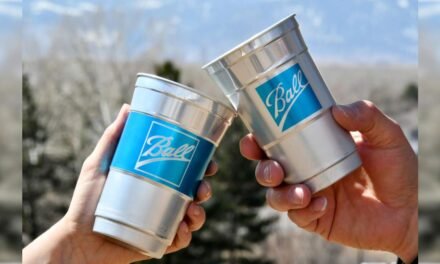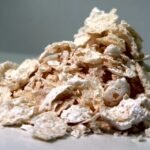More and more processors are experimenting with unique materials in Packaging for Bakery and Snack Products. Tanweer Alam and Aastha Bhardwaj focus on the variants of packaging materials that have been employed or that could be employed for proper packaging of bakery and snack products.
Table of Contents
Due to the continuous expansion of the bakery and snack food industry, new packaging solutions are always in demand. India’s bakery market at Rs. 49.5 billion tonnes makes it the third-largest market in the Asia Pacific after Japan and Australia. Globally, the bakery product is growing @ 4.5 -7 per cent annually, with $410 billion. The bakery industry in India comprises organised and unorganised sectors. Large, medium and small-scale manufacturers constitute the organised sector producing breads as well as biscuits, while the unorganised sector constitutes small bakeries and household units which manufacture these products and deliver them without proper packaging. For insights into the latest trends in the bakery industry, check out Recent Trends in Confectionery Industry.
Major varieties of dried bakery products (< 6 % moisture content), include soft and hard biscuits, cookies, crackers, etc, and the varieties of moist bakery products (> 12 % moisture content), include breads, buns, cakes, pastries, doughnuts, muffins, etc. However, these products are highly hygroscopic and easily tend to lose their crispness and flavour. For example, the dried bakery products have low moisture content but high fat content. Also, they are easily breakable. Thus, it is essential to have them protected from physical, chemical, and microbiological spoilage. Learn more about Good Manufacturing Practices in Food Industry to ensure quality.
Requirements for Packaging of Bakery and Snack Products
Snack and Bakery products typically require higher barriers to keep them fresh, coated poly or metalized materials are normally used. For some products that have high turnover rates or that are shelf-stable as-is, standard poly materials can be used to save cost. With so many different materials and thicknesses available, choosing the right one for a particular product can be confusing. Many new manufacturers follow the trend of the industry when choosing the packaging for their products. For innovative packaging solutions, explore Green Plastics: The Game Changer in Food Packaging.
For example, many potato chip companies use metalised materials for their bags, so if a similar product is being introduced, it may be wise to use the same type of material. Shelf-life testing and careful analysis of material data sheets are always strongly recommended before committing to a material that has not previously been used with a product. Discover how Edible Films and Coatings Enhance Food Quality can offer additional protection.
More and more customers are experimenting with unique materials and designs for product packaging. Rice papers, cotton papers and various clear coated films are giving graphic artists expansive mediums to work with. These outer materials coupled with the multiple-barrier and sealing layers available are helping to create some of the most attractive packages the market has seen. For more on sustainable options, read Rise of Sustainable Food Packaging for a Greener Future.
Appropriate packaging material to maintain the shelf life of bakery products is the need of the hour. Proper selection and optimisation of packaging are of major importance to food manufacturers too, concerning aspects such as economy, marketing, logistics, distribution, consumer demands, and the environmental impact of the packaging. This article focuses on the variants of packaging materials that have been employed or that could be employed for the proper packaging of bakery products. For further reading, see Role and Growth of Packaging in Food Industry.
The major ingredients in biscuits consist of wheat flour, fat and shortening, sugar, salt and other flavouring agents. Thus, they are very much susceptible to rancidity, moisture uptake (water vapour) and oxygen reactions. The presence of light has also been found to be detrimental to colours or cause oxidation of fats, leading to rancidity and producing undesirable off-flavours. On exposure to moist conditions and atmospheric oxygen, fats get oxidised, thus resulting in rancidity and decreased shelf life. Learn about How Packaging Extends Shelf Life of Meat for parallel insights.
The chemical spoilage in bakery products can be prevented by adding antioxidants like butylated hydroxyanisole (BHA), butylated hydroxy toluene (BHT), a-tocopherol, ascorbic acid, and certain gums. Nitrogen flushing in packaging may also be an alternative approach to delaying rancidity in low-moisture bakery products.
In addition to these, moulds are the most common type of spoilage organisms related to bakery products. Hence, the suitable packaging material should be resistant to the growth of yeasts or moulds and also grease-resistant. Moreover, the packaging material should have low oxygen permeability to prevent oxidation and rancidity of the fat. For more on food safety, visit Quality Assurance in Food Industry.
Types of Packaging Materials for Biscuits and Breads
Traditionally, biscuits and breads were packed in waxed paper wrappers. However, their use was limited as they had limited barrier properties. Aluminium had also been used as a packaging material for bakery products owing to properties such as heat conductivity, durability and strength, lightness, decorative potential and sustainability. For modern alternatives, explore Tinplate Packaging Adds Value to Processed Foods.
Packaging for Biscuits
Biscuits are fed into packing machines in continuous stacks. This is achieved through a stacker which converts free-flowing biscuits into uniform biscuits. The oldest flexible film to be used was cellophane because of its excellent gas barrier properties and heat sealability. Moreover, the traditional packaging of biscuits also includes tin. MST, MSAT, coated cellophane (MXXT) offer excellent moisture barrier, heat sealability and gloss. Enfold Wrapping is the classic, traditional biscuit wrapper. For more on biscuit brands, see From Parle-G to Oreo: Top 10 Biscuit Brands in India.
A portion of biscuits standing on edge is roll–wrapped or fold-wrapped into a heat-sealable film. The type of packing material used in the biscuit industry includes Primary packaging: the packaging material which comes into direct contact with a product, known as primary packaging. Laminate/Wrapper, Wax Paper and Bopp films. The longitudinal packet seal is sealed tightly in a fin seal style. The packet ends are folded neatly and heat-sealed. Due to the neat and tight surroundings of the film, this packet gives utmost mechanical protection and acceptable barrier properties for hard and semi-hard biscuits and many other cracker types.
Enfold wrapping is considered the most effective in terms of presentation by many marketing specialists, not only due to its neat and impeccable shape, but also due to its ability to clearly distinguish the product amongst the host of pillow pack items on the retail shelves. However, with the advent of other newer packaging materials and techniques with better properties, cellophane became less popular as it became too expensive. For insights into marketing strategies, read Power of Branding: 5 Successful Food and Beverage Rebranding Stories.
The significant shortcomings in traditional packages include: easy contamination and spoilage, poor shelf-life, unsuitability for transport over long distances, and for export purposes. The gradual advancement in the packaging industry has led to the following packaging avenues for mould-free preservation of bakery products: Secondary Packaging. These packagings are required basically for transportation /warehouse storage, and handling. Mostly, these are cardboard boxes or CBB made of kraft paper, or sometimes, tin. For more on packaging trends, see Top 10 Packaging Companies in India.
Packaging for Breads
One of the priorities of today’s bread-making industry is to find suitable packaging solutions to satisfy the peculiar requirements of bread, mostly appreciated by consumers for its crispy crust. The packaging material should allow for both rapid heat exchange with the environment and water vapour evaporation to prevent condensation inside the package. Perforated oriented polypropylene (OPP) films are currently the best materials available for satisfying the industry’s requirements. For more on bread production, check out What All One Needs to Bake a Good Quality Bread.
The films with variable barrier effects to water evaporation. The OPP film with a hole mean diameter = 0.54mm and density = 21.4 holes/cm2 played an interesting role in modulating moisture variations. Wrapping bread in this film enabled both crust crispness and crumb softness to be maintained during 48h of storage. Such performances cannot effectively be obtained by using alternative industrial bread packaging materials, such as paper bags, etc. For more on packaging innovations, visit Innovative Solutions for Meat and Alternative Proteins at IFFA 2025.
Namkeen Packaging
Nowadays namkeen is omnipresent around the globe. The safety and appeal of these products, choosing the most appropriate namkeen packaging is of great importance. Namkeen should be prepared hygienically and packed in moisture-free packaging to preserve the flavour, freshness and quality of products. In particular, variations in the moisture inside the namkeen during storage and their influence on changes in crumb softness affect the selection of packaging films. For more on packaging innovations, visit Innovative Solutions for Meat and Alternative Proteins at IFFA 2025.
OPP films and multi-layer metalised film bags with different hole size characteristics are the common choices for its packaging, because of the considerable differences in the hole size characteristics. The flexible and durable namkeen packaging pouches are able to provide convenience in storage and transportation. It also enhances the overall visibility of products on shelves. For insights into packaging materials, read Biodegradable Packaging Potential and Prospects.
Namkeen pouches are stored with ease and are more cost-effective than the rigid packaging methods. Creative packaging designs which are able to increase the point of sale transactions and contents packed within our namkeen packaging bags are protected from harmful bacteria and excess moisture, which is another important consideration. Pouches contain the following films: LLDPE, PPE, BOPP, PE, and MET. The formats of namkeen Packaging commonly used by the Namkeen Industry are: Re-sealable zipper, Euro slot, Transparent window, Hanging hole, and Tear notch-degassing valve, Rigid packaging, etc.
Packaging for Bakery and Snack Products: Other Systems
Rigid packages are formed into definite shapes from strong, constructive materials so that they retain their shape when filled with product and are not deformed unless subjected to sufficient force to destroy or damage the total structure. Plain cardboard boxes are utilised by many manufacturers to pack biscuits to differentiate their product from competitors. These standard paper boxes are slightly thicker. For more on rigid packaging, see Cheese Packaging Trends: How Packaging is Shaping the Dairy Delight Market.
After the primary packaging by flexible wrappers is done, display boxes are used to pack these primary packages, and then these boxes are shrink-wrapped to facilitate the consumers to see through the transparent film of the package, thus pertaining to the aesthetic appeal of the product. Tins or metallic boxes are still being used for the packaging of soft cookies as they are easily susceptible to deformation. Tube Packaging in the form of tin tubes or cylindrical structures of different heights are used for cookies and biscuits. Glass and ceramic containers also constitute rigid packaging, but the limitation of using glass as a packaging material is its bulk and fragility. For more on packaging materials, read Journey of Food Packaging Systems in India.
Flexible Packaging for Bakery and Snack Products
The flexible packaging market is estimated to be worth $351 billion by 2018, meaning that it is rapidly gaining market share from other sectors such as traditional rigid packaging. A package or a container made of flexible materials like paper, plastic, foil or any combination of these, when filled with desired contents, can readily change its overall shape and is termed as a flexible package. Paper bags may be used for the packaging of breads and baguettes, but these have been replaced by polybags by some artisan bakeries as they are more eco-friendly. Paper bags could be plain or can have printed material on them. For more on flexible packaging, visit Sustainable Packaging Future Prospects.
Common examples of flexible packaging are bags and pouches, and they are the most commonly used variants for packing bakery products these days. Other variants include: forms of wrappers, pre-formed pouches or form-fill pouches. Along with this, zig-zag fissures are provided to facilitate easy tearing of the material by consumers, contrary to primitive packaging materials that had plain ends, causing difficulty in opening. For more on packaging innovations, see How Demand for Sustainability is Transforming Food Packaging.
Zip Pouches are introduced as resealable pouches meant for products to be carried over a distance or to be kept for a more extended period. These pouches have a zip integrated into the pouches so as to open and close them as per convenience, thus retaining the crispness of the product and preventing entry of water vapour inside. Materials such as LDPE, PP, polyester, etc, have also been employed for this purpose.
Another type of wrapping, termed pillow pack wrapping, is the standard wrapping style for smaller biscuit packs (snack packs/single-serve packs), serving as a primary package and containing one or more piles of biscuits. In addition, pillow pack wrapping is used for bigger packets with products standing on edge (slug wrapping) as well. These primary packages can then be overwrapped by a bigger carton for strength. For more on resealable packaging, read Packaging and Labelling of Frozen Food.
The main advantage of pillow packs on edge is their flexibility with regard to the slug length. Additionally, the pillow packs’ typical fin seal style sealing is somewhat tighter than the enfold wrap. The disadvantage of pillow pack slug wrapping is its limited mechanical product protection due to its rather loose packing. Further, the presentation of products packed using the pillow pack style is considered by most to be less attractive than enfold packets. Another material, which is widely used, is biaxially oriented polypropylene film, commonly known as OPP. For less

Demanding applications, OPP monofilm is used, while for higher quality products, duplex OPP or OPP combinations (pearlised or metallised ) such as OPP/PE, OPP/PET, etc. are used. Polyvinyl chloride (PVC) trays are employed for the packing of cookies and cakes to prevent any damage, for e.g. Britannia Good Day choco chips are packed in PVC trays.
Flexible laminates of composite structures cover a significant market for biscuit packaging. They have desirable moisture barrier and gas barrier properties, heat sealability, as well as printability characteristics. The different variants of plastic films and their uses are tabulated in Table 1. For more on packaging materials, explore Aseptic Packaging of Food Products.
Modified Atmosphere Packaging for Bakery and Snack Products
Modified atmospheric packaging, in recent years, has geared up all the way, as one of the best preservation methods of bread and biscuits. It can be defined as “the enclosure of food products in a high gas barrier film in which the gaseous atmosphere has been altered to slow down the metabolic processes, in turn, extending the shelf life of the food products”. For more on preservation techniques, see Commercial Freezing Methods Used by Food Industry.
Bread products are excellent candidates for modified atmosphere packaging (MAP) and the technology is used widely for such foodstuffs. Typical products that benefit from MAP are tortilla wraps, baguette, bagels, pita, naan bread and other types of bread. Because these products have a relatively low water content, the type of microbes that can cause spoilage are mainly moulds, as bacteria prefer more water. For more on food safety, visit How Contamination During Food Processing Occurs.
These moulds are aerobic, so excluding oxygen and using a high proportion of carbon dioxide, up to 100%, is a highly effective way of significantly increasing the shelf life of these bread products. A big advantage of using very high CO2 as the modified atmosphere is that it makes the packaging relatively easy to test for leaks. Leak detection systems for carbon dioxide are well developed and can be configured to work automatically during the packaging process. For more on packaging technologies, read Nanotechnology for Safe Meat Packaging.
Developments in polymer chemistry have led to the development of new polymeric barrier packaging films, such as PVDC and EVOH, which have excellent moisture and gas barrier properties. Moreover, these can be laminated to give films having higher barrier properties, strength and heat sealability. Several other methods can be used to modify the atmosphere within the packaged products, such as vacuum packaging, gas flushing and active packaging by incorporation of oxygen scavengers. For more on active packaging, see Role of Edible Films and Coatings in Food Industry.
Active Packaging for Bakery and Snack Products
Active packaging is increasingly becoming popular that can prove to be an indispensable vehicle in the preservation of food items as it offers more for bread and bakery products, major active packaging systems such as moisture controllers, oxygen scavengers, ethanol emitters, antioxidants, flavor releasing/absorbing systems, antimicrobials, etc are quite relevant. For more on active packaging, explore Innovative Edible Biofilm to Combat Food Waste and Boost Freshness.
It has been well documented that the shelf life of bread and other baked products can be increased by spraying ethanol onto the surface of the product before packaging. Franke et al. (2002) studied the effects of an ethanol-releasing sachet on the shelf life of prebaked buns. Without the ethanol sachet, the buns had a shelf life of 2–3 days, while upon the incorporation of the sachet into the packaging, the shelf life was extended to an appreciable level of 13 days.
Furthermore, this incorporated amount of alcohol does not hinder the consumption of the buns. It is recommended to heat the buns before consumption, as a result of which the ethanol is vaporised. For more on food preservation, read Physical and Biochemical Changes During Commercial Freezing.
Incorporation of volatile antimicrobial substances from spices and herbs into packaging materials may provide alternative, effective ways of prolonging the shelf life of bread without the use of chemical preservatives (Jideani and Vogt, 2015). Gutiérrez et al. (2011) demonstrated that cinnamon-based active packaging is a suitable alternative for conventional MAP for gluten-free bread based on both microbial and sensory criteria. For more on spices in food, see Functional Foods and Phyto-medicines from Spices.
Thermoformed Plastic Trays
Thermoformed plastics are used for the packaging of bread and bakery products. These trays are made of polystyrene or PVC with multiple cavities/depressions for packing assorted biscuits, cookies, rolls, muffins, etc. They are usually closed with a snap-on lid or overwrapped, shrink-wrapped or sealed with a lidding material. These products can be kept neatly in these cavities, thus appealing to the consumer. The use of active packaging with oxygen absorbent and antimicrobial properties for bakery products helps to significantly increase the shelf-life and maintain the original quality of the product. For more on packaging solutions, visit Modern Trends in Food Delivery and Retail.
PVDC coated nylon, polyester, LDPE, PP, ethylene vinyl alcohol, polystyrene are examples of flexible packaging material used with active sachet. For more on packaging materials, read Biodegradable Packaging Potential and Prospects.
Modern Packaging Solutions for Bakery Products
Customers require fresh and frozen loaves, buns, flatbreads, and many other types of bakery products. Modern Packaging offers custom packaging solutions for your bakery product. Packaging needs, including Zipper slider, Micro-perforation, Frozen or fresh packaging consideration, Barrier protection (for oil, moisture, oxygen or aroma), eight colour graphics for your custom packaging design, NEW High-speed wicker packaging machine, Single-serve / Multi-packs / variety packs, Differentiating graphics, shelf-ready, Extended shelf-life technologies. For more on modern packaging, see Recent Trends in Food Processing Industry in India.
Conclusion
Bakery and snack food products include items of different packaging requirements, which are met by a range of plastic materials in the form of films, laminates and thermoformed trays. These materials provide adequate protection against moisture loss/gain, retain the taste and aroma, and are hygienic and safe for food contact. Other additional properties, such as machinability, printability, and cost-effectiveness, make them the ideal choice for a package. For further insights, explore How to Optimize Bakery and Confectionery Packaging.
Selected References
- Berenzon, S., and Saguy, I. S. (1998). Oxygen absorbers for extension of crackers shelf-life. LWT-Food Science and Technology. 31(1): 1-5.
- Franke, I., Wijma, E., and Bouma, K. (2002). Shelf-life extension of pre-baked buns by an active packaging ethanol emitter. Food Additives & Contaminants. 19(3): 314-322.
- Gutiérrez, L., Batlle, R., Andújar, S., Sánchez, C. and Nerín, C. (2011). Evaluation of antimicrobial active packaging to increase shelf life of gluten-free sliced bread. Packaging Technology Science. 24: 485-494.
- Guynot, M. E., Marin, S., Sanchis, V., and Ramos, A. J. (2003). Modified atmosphere packaging for the prevention of mold spoilage of bakery products with different pH and water activity levels. Journal of Food Protection, 66(10): 1864-1872.
- Janjarasskul, T., Tananuwong, K., Kongpensook, V., Tantratian, S., and Kokpol, S. (2016). Shelf-life extension of sponge cake by active packaging as an alternative to the direct addition of chemical preservatives. LWT-Food Science and Technology. 72: 166-174.
- Jideani, V. A and Vogt, K (2015): Antimicrobial Packaging for Extending the Shelf Life of Bread – A Review, Critical Reviews in Food Science and Nutrition. DOI: 10.1080/10408398. 2013.768198
















